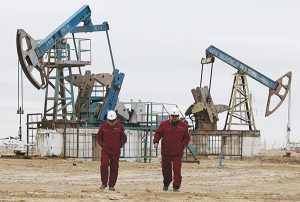Bloomberg
Oil headed for the biggest weekly gain since early March as Opec+ put the market on course for further tightening ahead of winter.
West Texas Intermediate traded above $90 a barrel on Friday, bringing futures close to 12% higher for the week, as Brent topped $95 for the first time since mid-September. Time spreads were signaling supply scarcity even before the producer alliance announced its biggest output cut since the start of the pandemic, a move that’s set to squeeze the market even more.
The tightening outlook halted the slide in oil prices, which were weighed down by concerns over a global economic slowdown and aggressive rate hikes by central banks. Russia also reiterated this week that it won’t sell oil to countries that adopt a US-led price cap, adding to supply uncertainty.
Even as crude fell over the last quarter, the factors that were “pushing prices down were coming to an end,†with the sustainability of Russian supply and continued releases from US oil reserves becoming uncertain, said Peter McNally, global sector lead for industrials, materials and energy at Third Bridge.
Aside from the rally in crude prices, diesel has been another pillar of oil market strength this week, as traders brace for scarce supply in the coming winter. Prices in Europe and the US are currently trading above $160 a barrel.
Meanwhile, the US Labour Department reported that the unemployment rate matched a five-decade low in September. The report sent equities crashing and the dollar rising on mounting fears that the US Federal Bank might continue rate hikes to combat inflation. In contrast with previous, crude held onto its rally, with supply fears at the forefront.
“Supply fears seem to be the driving force behind the market action this week, putting demand fears back on the back burner for petroleum prices, even though they remain front and center
in equity markets,†analysts
at wholesale-fuel distributor TACenergy wrote in a note.
The Organisation of Petroleum Exporting Countries and its allies plan to reduce output by 2 million barrels a day from November. However, Saudi Arabia’s oil minister said the real-world cut will likely be around 1 million to 1.1 million because some members are pumping well below their quotas.
 The Gulf Time Newspaper One of the finest business newspapers in the UAE brought to you by our professional writers and editors.
The Gulf Time Newspaper One of the finest business newspapers in the UAE brought to you by our professional writers and editors.
